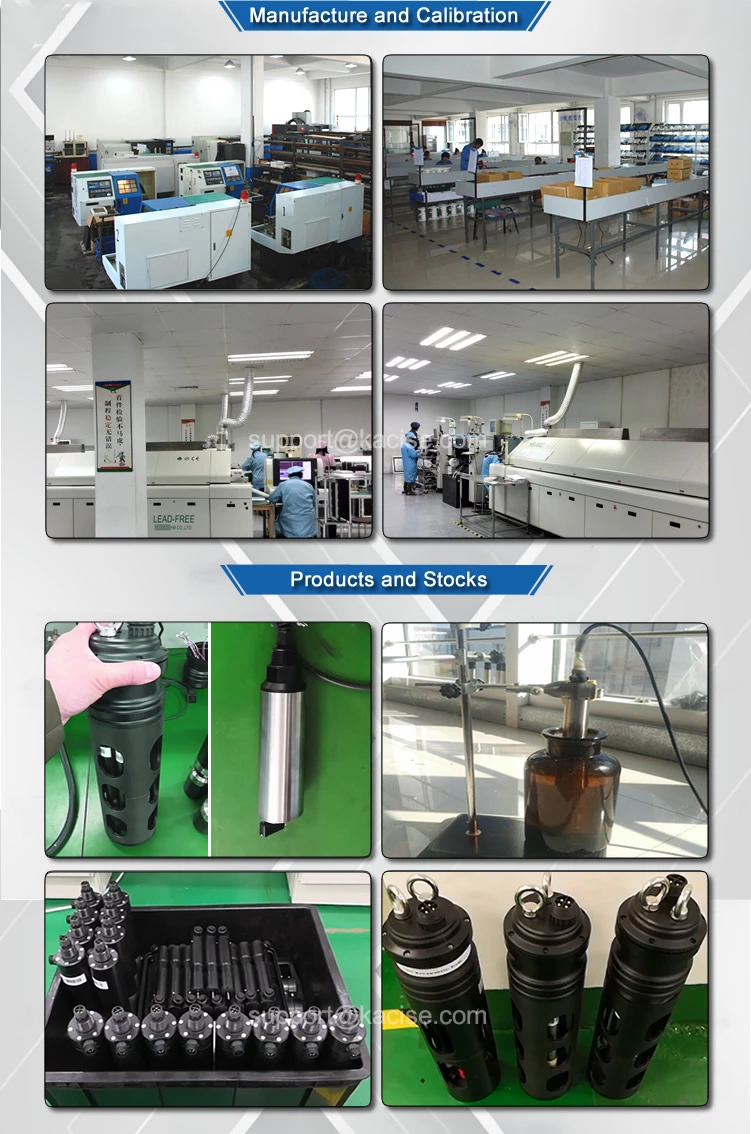Xi'an Kacise Optronics Co.,Ltd. |
|
Verified Suppliers
|
|
Hot Sell Good Quality Water Treatment Online Dissolved Oxygen Electrode Sensor DO Meter Probe
Description
Ph sensor is a sensor used to detect the concentration of hydrogen ion in the measured substance and convert it into corresponding usable output signal, which is usually composed of chemical part and signal transmission part. Ph sensor is often used for industrial measurement of solution, water and other substances.
KWS-700 digital pH sensor adopts industrial online electrode, built-in temperature sensor, can automatically temperature compensation, suitable for industrial sewage outlets, general rivers, manholes and other online long-term monitoring environments. The sensor adopts RS485 output and supports Modbus, which can realize networking and system integration without a controller.
PH sensor characteristics
Fast cable connector, waterproof function, avoid cable twisting phenomenon during installation
Long life, good performance in toxic ion aqueous solution
A variety of installation methods, easy to assemble
Strong resistance to chemical corrosion, integral seal, eliminate leakage phenomenon
Use and maintenance
When measuring the pH sensor, it should be cleaned in distilled water (or deionized water) and dried with filter paper to prevent impurities from being taken into the measured liquid. 1/3 of the sensor should be inserted into the measured solution.
When not in use, the sensor should be washed and inserted into the protective sleeve with 3.5mol/L potassium chloride solution, or inserted into the sensor in the container with 3.5mol/L potassium chloride solution.
Check whether the terminal is dry. If there is any stain, wipe it with anhydrous alcohol and blow dry before use. Long-term immersion in distilled water or protein solutions should be avoided, and contact with organosilicone grease should be prevented. Use a longer time sensor, its glass film may become translucent or attached to sediment, at this time can be washed with dilute hydrochloric acid, and wash with water. When the sensor is used for a long time and the measurement error occurs, it must be calibrated and corrected with the instrument.
If the sensor cannot be calibrated and measured during the maintenance of the sensor by the above methods, it indicates that the sensor has failed. Replace the sensor.
Features
Digital sensor, RS-485 output, support MODBUS Unaffected by transmission distance for better stability
Built-in temperature sensor, automatic temperature compensation
Specification
| Item | Parameters |
| Measuring range | 0-14pH |
| Accuracy | 0. 1pH |
| Resolution | 0.01 |
| Protection level | IP68 |
| Deepest depth | Underwater 10 meters |
| Temperature range | 0 ~ 50°C |
| Output | Support RS-485, MODBUS protocol |
| Power supply | DC 5V~15V, current<50mA |
| Size | Φ26*167.5mm |
| Installation | Drop in |
| Probe cable length | 10 m, customizable 5 m, 15 m and 30 m cable |
| Casing material | POM |
Production

Cases

Packaging & Shipping

To learn more about PH sensors click:
https://www.kacise.com/product/kws750-online-ph-sensor-rs485-modbus-or-4-20ma-output/